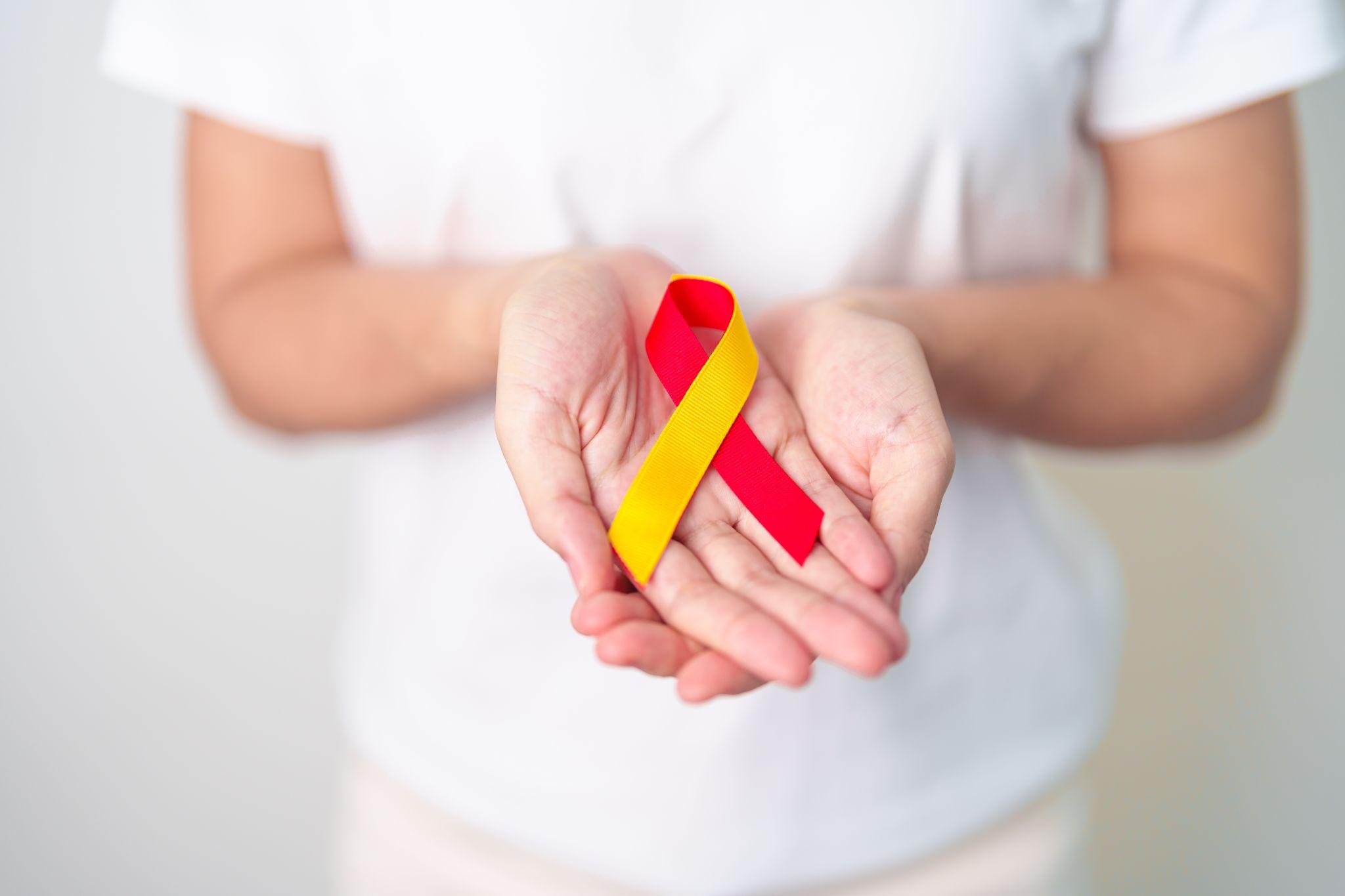
Our Addiction Resources
Navigating the world of addiction and recovery can be overwhelming. We’re here to provide clear, compassionate education and guidance. From practical advice for maintaining sobriety to informational guidance on the long-term effects of substance abuse, our content is a beacon of hope and understanding.
Our Team is Ready are ready to take your call
Call us Today!
or we can call you. Fill out form below
Our Blog

Facing Alcohol Addiction During Pregnancy
Pregnancy is a significant period in a woman’s life, bringing about numerous changes and responsibilities. One of the most crucial aspects is ensuring the health and well-being of both the mother and the unborn baby. For women struggling with alcohol addiction, pregnancy presents unique challenges. Understanding the effects of alcohol during pregnancy and knowing how to seek help is essential for the health of both mother and child.
Is Any Alcohol Safe During Pregnancy?
Many women wonder if any amount of alcohol is safe to consume during pregnancy. The straightforward answer from health experts is no. There is no known safe amount of alcohol to drink during pregnancy. Alcohol can pass through the placenta to the developing baby, and even small amounts can affect fetal development in various ways. Because it is so sensitive and risky, it is best to avoid alcohol entirely during pregnancy to ensure the baby’s health and development are not compromised.
How Does Alcohol Affect My Unborn Baby?
When a pregnant woman consumes alcohol, it crosses the placenta and reaches the baby. This can lead to a range of developmental issues and complications. Alcohol exposure can interfere with the baby’s brain development and overall growth. The severity of the impact depends on factors such as the amount of alcohol consumed, the timing during pregnancy, and the frequency of consumption.
Alcohol can cause a variety of birth defects and developmental disorders known as fetal alcohol spectrum disorders (FASD). These disorders can result in physical abnormalities, cognitive impairments, and behavioral problems. The baby may suffer from issues such as learning disabilities, poor coordination, hyperactivity, and difficulties with attention and memory.
Risks of Alcohol Use During Pregnancy
The risks associated with alcohol use during pregnancy are significant and far-reaching. Some of the major risks include:
- Miscarriage: Consuming alcohol increases the risk of miscarriage, particularly in the early stages of pregnancy.
- Stillbirth: Alcohol use can lead to stillbirth, where the baby is born without signs of life after 24 weeks of pregnancy.
- Preterm Delivery: Drinking alcohol can cause premature birth, leading to a host of health issues for the newborn, including respiratory problems, infections, and long-term developmental delays.
- Fetal Alcohol Spectrum Disorders (FASD): As mentioned earlier, FASD encompasses a range of physical, cognitive, and behavioral problems that can affect a child throughout their life.
- Facial Abnormalities: Research shows that alcohol use in the first 3 months of pregnancy can lead to abnormal facial features.1
- Low Birth Weight: Babies born to mothers who drink alcohol during pregnancy are more likely to have a low birth weight, which can lead to additional health complications.
- Developmental Delays: Alcohol exposure in the womb can lead to developmental delays, affecting the child’s ability to reach milestones at the appropriate age.
How and When Should You Give Up Drinking Alcohol?
The earlier a person quits drinking alcohol, the better it will be for the baby’s development. Even alcohol use during the few weeks before you know that you’re pregnant (and before it shows up on a pregnancy test) can have lasting effects.2
Even if you’re not aware of the pregnancy at first, or if you’re having trouble giving up alcohol, it’s never too late to stop. Quitting at any stage can still provide significant benefits and prevent further risks.
If you are actively trying to get pregnant: Abstain from alcohol entirely as soon as you decide to conceive. This ensures that your body is in the best possible condition to support a healthy pregnancy.If you discover (or suspect) you are pregnant and have been drinking: Stop immediately. Every day without alcohol improves the chances of a healthier pregnancy outcome.
If you are pregnant but are still struggling to quit drinking alcohol: Immediately seek support from professional addiction specialists who can provide the necessary guidance and treatment options.

How to Avoid Alcohol in Pregnancy
Avoiding alcohol during pregnancy is crucial for the health of your baby. Here are some practical tips to help you stay alcohol-free:
- Educate Yourself: Understand the risks associated with alcohol consumption during pregnancy. Knowledge can be a powerful motivator.
- Find Alternatives: Replace alcoholic drinks with non-alcoholic options such as sparkling water, fruit juices, or mocktails.
- Create a Support System: Surround yourself with supportive friends and family who encourage your decision to stay alcohol-free.
- Stay Busy: Engage in activities that do not involve alcohol, such as exercise, hobbies, or spending time with loved ones.
- Avoid Triggers: Identify and avoid situations or places where you might be tempted to drink alcohol.
- Seek Professional Help: If you struggle to avoid alcohol, do not hesitate to seek help from healthcare providers or addiction specialists.
If You’re Pregnant and Addicted to Alcohol, Lumina Recovery Can Help
Facing addiction during pregnancy can be incredibly challenging, but you don’t have to do it alone. At Lumina Recovery, we offer compassionate, specialized alcohol addiction treatment to women who are struggling, providing comprehensive care for all their needs, including supporting a healthy pregnancy.
Our team of experienced professionals understands the unique challenges that pregnant women with addiction face. We offer a range of services to ensure both mother and baby receive the best possible treatment, including:
- Medical Detox: Supervised detoxification to safely manage withdrawal symptoms and prepare for further treatment.
- Individual Therapy: One-on-one counseling to address personal challenges, develop coping strategies, and set recovery goals.
- Group Therapy: Supportive group sessions to share experiences, build connections, and gain insights from others facing similar struggles.
- Prenatal Care: Comprehensive healthcare services to monitor the health and development of the unborn baby and support the mother’s well-being.
- Nutritional Counseling: Guidance on maintaining a healthy diet during pregnancy to support recovery and fetal development.
- Holistic Therapies: Integrative treatments such as yoga, meditation, and art therapy to promote overall wellness and reduce stress.
- Aftercare Planning: Ongoing support and resources to ensure sustained recovery and successful transition to post-treatment life.
Our holistic approach focuses on physical, emotional, and mental health, providing a supportive environment for recovery.
Choosing Lumina Recovery means choosing a dedicated partner in your journey to sobriety. We are committed to helping you achieve a healthy, alcohol-free pregnancy and supporting you every step of the way. Contact us today to learn more about our programs and start creating a better future for yourself and your baby.
Sources:

Exploring the Alcohol–Cancer Connection
Drinking alcohol is a common social activity, but its effects on health can be severe and far-reaching. One significant concern is the connection between alcohol and cancer. Research strongly indicates that drinking alcohol, particularly in large amounts, can increase the risk of developing various types of cancer. Understanding this relationship is crucial for making informed decisions about alcohol use and seeking appropriate help if needed.
Does Alcohol Cause Cancer?
Not everyone who drinks alcohol will develop cancer. However, scientific evidence clearly indicates a link between alcohol consumption and an increased cancer risk. This increases with the amount of alcohol consumption, and heavy use, like in alcohol addiction, carries a much higher risk of developing certain cancers.1 While moderate drinking poses a lower risk, it’s still important to be aware that alcohol is technically a toxin, and that any alcohol could potentially contribute to cancer development over time.
Drinking responsibly and maintaining an otherwise healthy lifestyle might help mitigate some of the increased risks, but the only way to eliminate the cancer risk is to avoid drinking at all. Combining alcohol with other risk factors, such as smoking or drug use, can exacerbate these risks and significantly increase the likelihood of developing cancer.
How Does Alcohol Consumption Raise Cancer Risk?
The ways in which consuming alcohol raises cancer risk are complex, and researchers are still working to better understand them. So far, they have identified several ways that alcohol can contribute to cancer risk.
These include:
- Acetaldehyde Production: When the body metabolizes alcohol, it converts it into acetaldehyde, a toxic chemical and a probable human carcinogen. Acetaldehyde can damage DNA and prevent cells from repairing this damage, leading to cancer.1,2,3
- Oxidative Stress: Alcohol metabolism can generate reactive oxygen species (ROS), which cause oxidative stress and damage to cells, leading to mutations and cancer development.1,2,3
- Hormonal Changes: Alcohol can increase levels of estrogen and other hormones associated with breast cancer. Elevated hormone levels can promote the growth of certain types of tumors.1
- Nutritional Deficiencies: Heavy drinking can lead to deficiencies in essential nutrients such as vitamins A, C, D, E, and folate. These deficiencies can weaken the body’s defenses against cancer.1,2
- DNA Mutations: Alcohol and its byproducts can damage tissues, leading to inflammation and scarring (like cirrhosis of the liver). As cells try to repair the damage, they can end up with mistakes in their DNA, which could lead to cancer.3
- Solvent Properties: Alcohol can act as a solvent, enhancing the penetration of other carcinogens into the cells lining the upper digestive tract, increasing the risk of cancer in these tissues.2
What Types of Cancer Can Alcohol Potentially Cause?
Alcohol consumption has been linked to several types of cancer, including:3
- Mouth cancer
- Throat cancer
- Esophageal cancer
- Liver cancer
- Breast cancer
- Colon cancer
- Rectal cancer
- Laryngeal cancer
- Stomach cancer
Each of these cancers has specific risk factors associated with alcohol consumption, and the risk increases with the amount and duration of alcohol use. For example: colorectal cancer risks increase most significantly at two or more alcoholic beverages per day, and stomach and liver cancer risks increase at three or more alcoholic beverages per day.2
But Aren’t There Also Some Health Benefits?
There are some claims that suggest moderate consumption of certain types of alcohol can help reduce certain cancer risks, such as kidney cancer and non-Hodgkin lymphoma.1,3 However, these supposed benefits are not as well understood or clearly defined by scientific research. Even if drinking specific types and amounts of alcohol might offer benefits for particular cancer risks, these potential advantages are overshadowed by the overall increase in the risk of developing other types of cancer.

Can Rehab Help Me Prevent Cancer?
Preventing cancer involves reducing risk factors, including heavy alcohol consumption. If you are addicted to alcohol and are drinking heavily on a daily basis, it’s important to get professional help as soon as possible. While rehab cannot guarantee that you won’t get cancer, it plays a crucial role in reducing alcohol intake and, as a result, various cancer risks.
Here are a few ways addiction treatment may help reduce your risk of developing cancer:
- Stopping Alcohol Use: The primary goal of rehab is to help individuals stop drinking. Reducing or eliminating alcohol intake can significantly lower the risk of alcohol-related cancers.
- Introducing a Healthy Lifestyle: Rehab programs often include education on nutrition, exercise, and other healthy habits that can further reduce cancer risk.
- Medical Monitoring: Regular health check-ups during and after rehab can help detect any early signs of cancer or other health issues, allowing for prompt intervention.
Rehab also provides comforting surroundings and psychological and emotional support, all of which can be crucial for maintaining sobriety and reducing the stress that can lead to unhealthy behaviors and relapse.
Get Help for Alcohol Addiction at Lumina Recovery
At Lumina Recovery, we understand the profound impact that alcohol addiction can have on your health, including increasing your risk of cancer. Our comprehensive rehab programs are designed to help you overcome addiction through personalized care, evidence-based therapies, and a supportive environment.
Our services include:
- Personalized Treatment Plans: We tailor our programs to meet the unique needs of each individual, ensuring the best possible outcomes.
- Evidence-Based Therapies: Our approach incorporates proven methods such as cognitive behavioral therapy (CBT), motivational interviewing, and holistic treatments.
- Supportive Community: We provide a nurturing environment where you can connect with others who understand what you’re going through.
- Aftercare Programs: To help maintain long-term sobriety, we offer ongoing support and resources even after you leave our facility.
Taking the first step towards recovery is crucial not only for overcoming addiction but also for reducing your risk of serious health conditions like cancer. Contact Lumina Recovery today to learn more about our alcohol addiction programs and how we can help you lead a healthier, alcohol-free life.
Sources

The Benefits of Choosing Rehab in California
Deciding to seek help for drug or alcohol addiction is a courageous and life-changing step. Whether you are struggling with addiction yourself or are a concerned loved one, choosing the right rehabilitation center is crucial.
Among the many options available, California stands out as an exceptional destination for addiction rehabilitation. Discover the unique benefits of choosing rehab in California and gain insights into why this state is a preferred choice for many seeking recovery.
The California Advantage
California offers a unique and supportive environment for those seeking addiction rehabilitation, making it a top choice for recovery. From its stunning natural landscapes to its high-quality treatment facilities, rehab centers in California provide a wealth of benefits that can enhance the healing process.
Climate and Natural Beauty
One of the most compelling reasons to choose rehab in California is its unparalleled natural beauty and climate. The state has a wide range of landscapes, from serene beaches to majestic mountains. This diversity provides numerous opportunities for patients to engage with nature, which can be a powerful aid in the recovery process.
Spending time in nature can reduce stress, lower blood pressure, and improve overall mental health. For someone struggling with addiction, these benefits can be particularly valuable.
The pleasant weather in California allows for outdoor activities year-round. Patients can participate in activities such as hiking in the redwood forests, meditating on the beach, or practicing yoga in a tranquil garden.
High-Quality Treatment Facilities
California is home to some of the most renowned rehab centers in the country. These addiction rehabs in California are equipped with state-of-the-art amenities and staffed by experienced professionals who are dedicated to providing the best possible care. The high standards of care in California ensure that patients receive comprehensive and effective treatment tailored to their specific needs.
Many rehab centers in California offer specialized programs that cater to different types of addiction and individual preferences. For instance, there are luxury rehab centers like Lumina Recovery that provide a more comfortable and private environment, complete with amenities such as private rooms and gourmet meals. These high-end facilities are designed to make the recovery process as comfortable as possible, allowing patients to focus entirely on their healing.
Holistic Treatment Approaches
Many drug rehab programs in California emphasize holistic treatment approaches. This means that, in addition to traditional therapies like counseling and medication, these programs often include alternative treatments such as yoga, acupuncture, and nutritional counseling. The aim is to treat the whole person, addressing not just the physical aspects of addiction but also the mental, emotional, and spiritual dimensions.
Holistic treatments can be incredibly beneficial in the recovery process. Yoga for addiction recovery helps to reduce stress and anxiety, improve physical health, and enhance mindfulness. Acupuncture can alleviate withdrawal symptoms and reduce cravings. Nutritional counseling ensures that patients are getting the proper nutrients, which can help to restore physical health and improve mood.
Diverse Cultural and Recreational Opportunities
California is a melting pot of cultures, offering a rich tapestry of experiences that can be incredibly enriching for those in recovery. The state’s cultural diversity means that individuals can explore new perspectives and activities, which can be both therapeutic and motivating.
Participating in cultural activities and exploring new hobbies can provide a healthy distraction from cravings and negative thoughts. For example, patients can attend art classes, music festivals, or cooking workshops. These activities not only provide enjoyment but also help individuals discover new passions and interests that can replace the role of addiction in their lives.
Strong Support Networks
Rehabilitation is not just about the treatment received in a facility, it also involves building a strong support network. California has a vast network of support groups and recovery communities where individuals can find encouragement and camaraderie. These networks play a crucial role in helping patients stay motivated and committed to their recovery journey.
Support groups such as Alcoholics Anonymous (AA) and Narcotics Anonymous (NA) have a strong presence in California, offering regular meetings where individuals can share their experiences and support each other. These meetings provide a safe and non-judgmental environment where individuals can speak openly about their struggles and successes.

Accessibility and Travel Convenience
Traveling for rehab can be a daunting prospect, but California’s extensive transportation network makes it relatively easy to reach. Major cities like Los Angeles, San Francisco, and San Diego have well-connected airports and public transportation systems, making it convenient for out-of-state patients to travel for rehab in California. This accessibility is particularly beneficial for those who may be considering traveling long distances to find the right treatment program.
California’s reputation as a top destination for addiction rehab means that there are numerous resources available to assist with travel logistics. Many drug rehabs in California offer services to help patients plan their travel, including airport pick-up and transportation to the facility. This can alleviate some of the stress associated with traveling for treatment, allowing patients to focus on their recovery from the moment they arrive.
Legal Protections and Patient Rights
California has strict laws and regulations in place to protect the rights of patients in rehab. These laws ensure that individuals receive fair treatment and that their privacy is respected. Knowing that their rights are safeguarded can provide patients with peace of mind, allowing them to focus entirely on their recovery.
One significant aspect of California’s legal protections is the emphasis on patient confidentiality. Addiction rehabs in California must adhere to privacy laws, ensuring that an individual’s personal information and treatment details remain confidential. This can be particularly reassuring for those who may be concerned about the stigma associated with addiction.
Discover the Power of Rehab in California With Lumina Recovery
Choosing rehab in California offers numerous benefits, from the state’s natural beauty and ideal climate to its world-class rehabilitation centers and innovative treatment approaches. The supportive community, holistic recovery methods, and abundant cultural and recreational opportunities further enhance the recovery experience.
Lumina Recovery’s residential detox/inpatient and outpatient rehabs in Southern California provide comprehensive, personalized care designed to support lasting recovery and wellness.
Reach out today to start your journey to a healthier, more fulfilling life by exploring the exceptional rehab options available in California.

Why Choose an Out-of-State Rehab?
Making the decision to seek help for alcohol addiction is a crucial step toward recovery. For many, choosing the right rehab facility is a significant part of this journey. While some prefer local options, others find that traveling for rehab offers unique benefits that can enhance their recovery process.
Understanding why some individuals benefit from rehab out-of-state and how to choose the best facility for your needs can help you make an informed decision for yourself or your loved one.
6 Benefits of Out-of-State Rehab
There are many unique advantages of out-of-state rehab that support and enhance the recovery process:
1. A Fresh Start in a New Environment
One of the main reasons people choose out-of-state rehab is to get a fresh start in a new environment. Being away from familiar places, people, and substance use triggers can help individuals focus entirely on their recovery. A change of scenery can provide a sense of renewal and a break from the patterns that contributed to addiction.
2. Reduced Temptations and Distractions
Out-of-state rehab can minimize distractions and temptations that might be present in one’s home environment. When individuals are far from their usual surroundings, they are less likely to encounter the people, places, and situations that may have enabled their addiction. This distance can make it easier to establish new, healthier habits.
3. Anonymity and Privacy
For many, privacy is a crucial aspect of their recovery. Out-of-state rehab provides a level of anonymity that can be comforting. Being in a different state means less chance of running into someone you know, allowing you to focus on your treatment without worrying about who might find out about your situation.
4. Access to Specialized Treatment Programs
Different states have different rehab facilities, each offering unique programs and approaches to treatment. By choosing an out-of-state rehab, you have access to a broader range of specialized programs that might better suit your needs. This can include holistic treatments, unique therapeutic approaches, or facilities that cater to specific demographics or addiction types.
5. Building a New Support Network
Being in a new location allows you to build a new support network. This network can consist of fellow patients, therapists, and staff who understand your journey and can provide encouragement and accountability. Forming new relationships in a supportive environment can be incredibly beneficial for long-term recovery.
6. Opportunity for Self-Discovery
An out-of-state rehab experience can offer opportunities for self-discovery. Being in a new place, away from the familiar, allows you to reflect on your life, choices, and future without the constraints of your old environment. This introspection can be a powerful tool in the recovery process, helping you to understand the root causes of your addiction and how to address them.

How to Choose the Best Out-of-State Rehab for You
Selecting the best out-of-state rehab requires careful consideration of various factors to ensure it aligns with your recovery needs and goals.
Research and compare facilities. Start by researching various out-of-state rehab centers in the state you are considering. Look for reviews, testimonials, and success stories. Comparing different facilities will give you a sense of what each one offers and help you find a place that aligns with your recovery goals.
Consider the treatment programs offered. Not all rehab programs are created equal. Some out-of-state drug rehab facilities might specialize in certain types of therapy, such as cognitive behavioral therapy (CBT), dialectical behavior therapy (DBT), or holistic approaches. Make sure the facility you choose offers the types of treatment that have been shown to be effective for alcohol addiction.
Check accreditation and licensing. Ensure that the rehab facility is accredited and licensed by relevant authorities. This guarantees that the facility meets specific standards of care and that the staff is qualified to provide treatment. Accreditation by organizations like the Joint Commission or CCAPP (California Consortium of Addiction Programs and Professionals) is a good indicator of quality.
Evaluate the staff’s qualifications. The staff at a rehab facility plays a crucial role in your recovery journey. Check the qualifications of the medical professionals, therapists, and support staff. Look for facilities where staff members have experience and specialized training in addiction treatment.
Consider the location and setting. The location and setting of the rehab facility can impact your recovery experience. Some people might prefer a serene, rural setting, while others might find comfort in a more urban environment. Consider what type of setting will be most conducive to your recovery.
Assess the aftercare programs. Recovery doesn’t end when you leave the rehab facility. Effective aftercare programs are essential for maintaining sobriety. Look for facilities that offer robust aftercare plans, including support groups, counseling, and resources to help you transition back into everyday life.
Cost and insurance coverage. Finally, consider the cost of the rehab program and whether it is covered by your insurance provider. Out-of-state rehab can be expensive, and it’s important to understand the financial aspects before making a decision. Contact your insurance company to see what portion of the treatment is covered and what out-of-pocket expenses you might incur.
Find the Right Out-of-State Rehab With Lumina Recovery
Choosing an out-of-state rehab can be a beneficial step for many individuals seeking to overcome drug or alcohol addiction. It offers a fresh start, reduced temptations, increased privacy, and access to specialized programs. By carefully researching and considering factors like treatment programs, staff qualifications, location, and cost, you can find the best out-of-state rehab center to support your journey to recovery.
Explore Lumina Recovery’s inpatient and sober living options in California and other states to find the perfect environment for your journey to lasting sobriety.
Take the next step toward lasting sobriety by finding the out-of-state rehab that best meets your needs today.

Understanding Drinking Culture
Alcohol is deeply woven into many societies. It appears in celebrations, casual gatherings, and even somber moments. For some, it’s a way to relax or connect with others, but for some people, it can become a serious problem.
At Lumina Recovery, we believe that shedding light on drinking culture and how it can lead to unhealthy relationships with alcohol is important in helping individuals identify an addiction to alcohol.
What Is Drinking Culture?
Drinking culture refers to the customs and social behaviors surrounding the consumption of alcohol. It varies widely across different regions and communities. In some places, it’s common to have a drink with dinner. In others, heavy drinking and binge drinking at parties or during weekends are the norm.
Media, social norms, and traditions all play a role in shaping drinking culture. Movies, TV shows, and advertisements often depict alcohol as a way to have fun, socialize, or deal with stress. These portrayals can influence our attitudes and behaviors toward drinking.
For instance, popular movies often show characters bonding over drinks, celebrating with champagne, or finding solace in a glass of whiskey after a hard day. These representations can create an image of alcohol as a necessary part of life, reinforcing its place in our social fabric.
The Role of Social Norms
Social norms are unwritten rules about how to behave. They influence our actions and expectations. When it comes to drinking, social norms can have a powerful impact. If we see our friends and family drinking regularly, we might feel it’s normal to do the same.
Peer pressure is another factor, as in many social settings, refusing a drink can make one feel out of place. This peer pressure can lead people to drink more than they would on their own. For example, college parties or social gatherings often have an expectation to start drinking excessively to fit in or be part of the group.
Drinking can also be tied to social identity. In some circles, the ability to handle a lot of alcohol is seen as a sign of strength or social acceptance. This can lead individuals to drink more than they are comfortable with to maintain their social status or fit in with a particular group.
Social norms around drinking can also change with age and life stages. Young people may face significant pressure to drink in social settings like parties or college events. Middle-aged individuals might encounter norms around drinking at business dinners or social gatherings. Older adults might have different drinking habits, such as enjoying a glass of wine with dinner or meeting friends for cocktails.
Cultural celebrations and rituals often involve alcohol, further embedding it into social norms. Think of toasting at weddings, celebrating with champagne on New Year’s Eve, or enjoying a beer while watching sports. This can create strong associations between drinking and positive experiences. In some cultures, drinking is an integral part of rites of passage. For example, in the United States, turning 21 is celebrated with alcohol as it marks the legal drinking age.
Workplace culture can also influence drinking habits. In some industries, networking and socializing over drinks at happy hour is common. This can create a professional environment where drinking is seen as a way to build relationships and advance one’s career.
Recognizing Unhealthy Patterns
It’s important to be aware of the signs that drinking might be becoming a problem. These can include:
- Drinking Alone: Regularly drinking alone can be a sign of alcohol dependency. Drinking should ideally be a social activity, and when it becomes a solitary habit, it often indicates a deeper issue.
- Neglecting Responsibilities: If drinking starts to interfere with work, school, or family obligations, it might be time to reassess. Missing deadlines, poor performance, or neglecting duties because of drinking are red flags.
- Increased Tolerance: Needing more alcohol to feel the same effects is a warning sign. This increased tolerance often leads to higher consumption levels, which can escalate into dependency.
- Withdrawal Symptoms: Experiencing withdrawal symptoms, such as shakiness, anxiety, irritability, or nausea when not drinking, is a serious indicator of dependency. These physical and psychological symptoms can make it difficult to cut back or quit without help.
- Preoccupation with Drinking: Constantly thinking about drinking, planning activities around alcohol, or becoming irritable when alcohol is not available are signs of an unhealthy relationship with alcohol.
- Failed Attempts to Quit: Repeatedly trying to cut down or quit drinking and not being able to do so is a clear indication that professional help might be needed.

Seeking Help for Drinking
If you or a loved one is struggling with alcohol addiction, it’s important to seek help. Here are some steps you can take:
Talk to someone. Sharing your concerns with a trusted friend or family member can be the first step. Opening up about your struggles can provide emotional support and help you feel less alone.
Seek professional help. A doctor or counselor can provide support and guidance. Medical professionals can assess the severity of the problem and recommend appropriate treatment options, such as therapy, medication, or both.
Consider treatment programs. Inpatient or outpatient treatment programs can provide structured support and care. These programs often include a combination of therapy, education, and medical supervision to help individuals overcome addiction.
Create a supportive environment. Surround yourself with people who support your decision to cut back or quit drinking. Avoid situations where you might be tempted to drink, and engage in activities that do not involve alcohol.
Set realistic goals. Setting achievable goals for reducing or quitting alcohol can help you stay motivated. Celebrate your progress, no matter how small, and be patient with yourself.
Take the First Step Toward a Healthier Future With Lumina Recovery
Drinking culture is a complex and pervasive aspect of many societies. While it can promote socialization and enjoyment, it can also lead to unhealthy relationships with alcohol. Understanding the influence of drinking culture can help individuals make informed choices about their alcohol consumption.
Lumina Recovery offers comprehensive alcohol addiction treatment and specialized programs tailored for individuals struggling with alcohol use disorders.
Connect with our team of specialists to start making informed choices today and build a supportive environment for a healthier relationship with alcohol.

Can You Be Addicted If You Only Drink Beer?
Alcohol addiction, or alcohol use disorder (AUD), is often associated with hard liquors like vodka, whiskey, or rum. However, a common misconception is that drinking beer isn’t as harmful and that one cannot be addicted if they only consume beer.
This belief can be dangerous, leading to the neglect of signs of addiction and delaying necessary help. It is important to explore the myth that beer consumption cannot lead to addiction, discuss how AUD manifests differently for everyone, and explain what beer addiction looks like and when to seek help.
Beer vs. Hard Liquor
Many people believe that beer is a “safer” alternative to hard liquor. This belief is based on the lower alcohol content in beer compared to spirits. The National Institute on Alcohol Abuse and Alcoholism (NIAAA) says that the average alcohol by volume percentage for beer is 5%, the average for wine is 12%, and the average for a cocktail is 40%.1
While beer generally has a lower alcohol content per serving, this does not mean it is harmless. The amount of alcohol consumed plays a crucial role in the risk of developing alcohol dependence. Someone who drinks several beers a day can consume as much alcohol as someone who drinks a few shots of hard liquor.
The misconception that beer is not as addictive can lead to overlooking the signs of addiction. People may continue their beer consumption under the false belief that they are not at risk, which can perpetuate harmful drinking habits and lead to serious health and social consequences.
Additionally, the cultural normalization of beer drinking, such as during sports events or social gatherings, further reinforces the notion that beer is not a substance of concern.
AUD Looks Different for Everyone
Alcohol use disorder is a medical condition characterized by an inability to stop or control alcohol use despite negative consequences.2
It affects people differently, and the type of alcoholic beverage consumed does not determine whether someone can develop AUD. The critical factors are the patterns of drinking and the impact on the individual’s life.
For some, AUD might manifest as binge drinking on weekends, while for others, it could be daily consumption of alcohol, including beer. The common denominator is that the person’s drinking habits interfere with their daily life, health, and relationships.
Understanding that AUD looks different for everyone is crucial in recognizing the varied signs and symptoms. For instance, one person might experience withdrawal symptoms and physical health problems, while another might face significant social or psychological issues.
Some individuals might be high-functioning when drinking alcohol, managing to keep up with work and family responsibilities despite their addiction, making it harder for others to identify the problem.
AUD’s diversity means that effective alcohol addiction treatment must be personalized. What works for one person might not work for another. Recognizing this variability helps in creating a more inclusive and supportive environment for those struggling with AUD.
What Beer Addiction Looks Like
Addiction to beer can be similar to addiction to other types of alcohol. Some signs that someone might be addicted to beer include:
- Increased Tolerance: Needing to drink more beer to achieve the same effects. This increased tolerance can lead to consuming larger quantities, raising the risk of health problems such as liver disease, heart issues, and brain damage.
- Withdrawal Symptoms: Experiencing symptoms like shakiness, sweating, or anxiety when not drinking. Withdrawal can also manifest as nausea, irritability, or difficulty sleeping.
- Loss of Control: Drinking more beer than intended or for a longer period than planned. This loss of control might mean not being able to stick to set limits on drinking or finding it difficult to cut down despite trying to do so.
- Neglecting Responsibilities: Failing to fulfill obligations at work, school, or home because of drinking. This neglect can result in poor job performance, academic failure, or strained family relationships.
- Continued Use Despite Problems: Continuing to drink beer even when it causes or worsens physical, mental, or social issues. This might include worsening health conditions, increasing conflict with loved ones, or legal problems such as DUIs.
- Spending a Lot of Time Drinking: Investing a significant amount of time in activities related to beer consumption. This could involve spending a lot of time drinking, recovering from drinking, or planning the next drinking session, often to the detriment of other interests and activities.

How to Seek Help
Recognizing the need for help is the first step towards recovery. If you or a loved one exhibits any of the signs mentioned above, it might be time to seek professional assistance. Here are some steps to consider:
- Acknowledgment: Admit there is a problem with beer consumption. This acknowledgment can be challenging due to the normalization of beer drinking in many social contexts, but it is a crucial first step.
- Medical Evaluation: Consult with a healthcare provider to assess the severity of the addiction. A medical professional can provide a comprehensive evaluation and recommend appropriate treatment options based on the individual’s specific needs.
- Therapy and Counseling: Engage in individual or group therapy to address underlying issues and develop coping strategies. Cognitive behavioral therapy (CBT) and dialectical behavior therapy (DBT) are commonly used approaches that can help individuals understand their drinking patterns and make positive changes.
- Support Groups: Join groups like Alcoholics Anonymous (AA) to find community support and encouragement. Support groups offer a sense of belonging and shared experiences, which can be invaluable during the recovery process.
- Rehabilitation Programs: Consider inpatient or outpatient rehab programs that provide structured support and medical care. Rehab programs offer a safe and supportive environment for detoxification, therapy, and skill-building to maintain sobriety.
- Ongoing Support: Continuously seeking support even after initial treatment. Recovery is a long-term process that often requires ongoing therapy, participation in support groups, and lifestyle changes to sustain sobriety.
Find Your Path Toward Sobriety With Lumina Recovery
The belief that you can’t be addicted if you only drink beer is a dangerous misconception. Alcohol use disorder can affect anyone, regardless of the type of alcohol they consume. Recognizing the signs of beer addiction and seeking help early can lead to better outcomes and a healthier, more fulfilling life.
Lumina Recovery provides alcohol addiction treatment programs for those addicted to beer or any type of alcohol.
If you or a loved one is struggling with beer addiction, don’t hesitate to reach out to our team of specialists today.
Sources:

18 Reasons to Stop Drinking Today
Alcohol use disorder is a struggle that affects many aspects of life. Whether you’re facing this challenge yourself or concerned about a loved one’s alcohol consumption, deciding to stop drinking alcohol can be a transformative step toward a healthier, happier future.
The benefits of quitting and changing your relationship with alcohol extend far beyond physical health, impacting financial stability, mental well-being, relationships, and overall quality of life. Here, we explore compelling reasons to stop drinking today.
Financial Benefits
The financial impact of drinking a lot can be significant, affecting your budget and long-term financial goals. By stopping drinking, you can experience immediate and long-term financial benefits that contribute to a more secure and stable future.
1. Save Money
Alcohol can be expensive, especially if you drink frequently. Cutting out alcohol means more money in your pocket, which can be used for other essentials or saved for future goals. For example, if you spend $10 a day on alcohol, quitting could save you at least $3,650 a year.
2. Avoid Medical Costs
Heavy drinking and alcohol abuse often lead to health problems, resulting in costly medical bills. By quitting, you reduce the risk of alcohol-related illnesses and the associated expenses. This includes savings on both short-term medical treatments and long-term healthcare costs for chronic conditions.
3. Increase Productivity
Alcohol can affect work performance and productivity. Staying sober can lead to better job performance, potential promotions, and increased earning potential. Additionally, fewer sick days and higher energy levels can contribute to career advancement and job security.
Health Benefits
Quitting alcohol can lead to substantial improvements in your physical and mental health, enhancing your overall well-being and longevity. These health benefits can be life-changing and provide a strong incentive to stop drinking.
4. Improved Physical Health
Giving up alcohol can lead to significant improvements in your overall health. Benefits include better liver function, lower blood pressure, and reduced risk of cardiovascular disease and stroke. Your immune system can also become stronger, helping you fend off illnesses more effectively.
5. Weight Management
Alcohol is high in empty calories. By cutting it out, you may find it easier to manage your weight and improve your physical fitness. This can lead to a healthier body composition and reduced risk of obesity-related conditions such as diabetes and heart disease.
6. Better Sleep
Alcohol can disrupt sleep patterns. Stopping drinking can lead to better sleep quality and more restful nights. Improved sleep can enhance your daily energy levels, mood, and overall health, making you feel more rejuvenated and focused.
Mental Health Benefits
Alcohol profoundly impacts mental health, often exacerbating underlying issues and creating new challenges. Quitting alcohol can lead to remarkable improvements in mental clarity, emotional stability, and overall psychological well-being.
7. Reduced Anxiety and Depression
Alcohol can exacerbate mental health issues like anxiety and depression. Quitting can help stabilize your mood and improve your mental health. As your brain chemistry balances out, you may find that symptoms of anxiety and depression diminish, leading to a more positive outlook on life.
8. Clearer Thinking
Alcohol impairs cognitive function. By stopping, you can enjoy clearer thinking, better decision-making, and improved memory. This cognitive clarity can help you make more informed and rational decisions in all areas of your life.
9. Increased Self-Esteem
Achieving sobriety can boost your self-esteem and confidence, leading to a more positive self-image. Overcoming the challenges of addiction can empower you and give you a sense of accomplishment, contributing to better mental health and resilience.
Relationship Benefits
Alcohol can deeply affect your relationships with family, friends, and colleagues. By quitting alcohol, you can foster healthier, more supportive connections and strengthen your bonds with loved ones.
10. Improved Relationships
Alcohol can strain relationships with family and friends. Quitting can lead to healthier, more supportive relationships, stronger connections, as well as mending relationships with loved ones. Being present and engaged without the influence of alcohol can help rebuild trust and improve communication.
11. Better Parenting
For those with children, stopping drinking can lead to better parenting. You can be more present, attentive, and involved in your child’s life. This can create a more stable and nurturing environment, fostering better emotional and developmental outcomes for your children.
12. Enhanced Social Life
Sobriety can improve your social life by allowing you to form more genuine connections and participate in a wider range of activities. You can engage in hobbies and interests that don’t revolve around drinking, leading to more meaningful and fulfilling social interactions.

Emotional Benefits
Quitting alcohol can lead to significant emotional improvements, fostering greater emotional stability and resilience. These benefits can enhance your overall emotional well-being and help you navigate life’s challenges more effectively.
13. Greater Emotional Stability
Alcohol can cause mood swings and emotional instability. Quitting can lead to more consistent and balanced emotions. This emotional stability can improve your daily life, making it easier to handle stress and maintain positive relationships.
14. Enhanced Coping Skills
Without relying on alcohol, you’ll develop healthier coping mechanisms for dealing with stress and life’s challenges. This can lead to a more resilient mindset and better problem-solving abilities.
15. Increased Gratitude
Sobriety can help you appreciate the small joys in life and develop a deeper sense of gratitude. This positive outlook can enhance your overall happiness and satisfaction with life.
Long-Term Benefits
The long-term benefits of quitting alcohol are extensive and can significantly improve your quality of life. These benefits can inspire lasting positive changes that affect various aspects of your life.
16. Extended Longevity
Quitting alcohol can add years to your life by reducing the risk of serious health conditions. This extended longevity allows you to enjoy more time with loved ones and pursue your passions and goals.
17. Better Quality of Life
Overall, the combination of physical, mental, emotional, and social benefits leads to a significantly improved quality of life. You can experience greater joy, fulfillment, and satisfaction in your daily activities.
18. Legacy of Health
By quitting alcohol, you set a positive example for future generations, promoting a legacy of health and well-being. This can inspire your children and others around you to make healthier choices, creating a ripple effect of positive change.
Stop Drinking Today With Support From Lumina Recovery
Deciding to stop drinking is a powerful choice that can lead to numerous benefits. From improved health and financial stability to better relationships and emotional well-being, the advantages of quitting alcohol are profound and far-reaching.
Lumina Recovery’s alcohol addiction treatment program is here to provide the resources and guidance necessary to help you achieve lasting sobriety.
If you or someone you love is struggling with alcohol addiction, reach out—it is never too late to make a change.

Is Addiction Really a Disease?
Addiction is a complex issue that has always garnered attention and debate in society. For many addicted individuals and their loved ones, there can be a sense of guilt or frustration, wishing they would just “get it together.” When someone downplays their addiction, it can be especially hard to see it as a disease. Sometimes, a person would rather be seen as making a selfish choice than as someone who is no longer in control of their life.
Understanding whether addiction is a disease involves delving into its definition, examining various models, and exploring its causes and treatments.
What Is Drug Addiction?
Drug addiction, also known as substance use disorder, is a chronic disease characterized by compulsive drug seeking and use despite harmful consequences. This disorder affects brain function and behavior, leading to an inability to control the use of legal or illegal drugs or medications. Over time, the repeated use of these substances alters the brain’s reward system, making it difficult for individuals to experience pleasure from anything other than the drug.1
Models of Addiction
There are various models of addiction, each providing a different perspective on how and why addiction occurs. These models help in understanding the complexity of addiction and the multifaceted approaches needed for effective treatment.
The Disease Model
The disease model of addiction is one of the most widely accepted frameworks. It views addiction as a chronic, relapsing brain disease characterized by compulsive drug seeking and use. This model emphasizes that addiction alters the brain’s structure and function, making it a medical condition that requires treatment. Like other chronic diseases such as diabetes or heart disease, addiction can be managed with the right interventions, but it requires ongoing care.
The Psychological Model
The psychological model focuses on the mental and emotional aspects of addiction. It suggests that addiction is a result of underlying psychological issues such as trauma, stress, or mental health disorders. This model highlights the importance of addressing these root causes through therapy and counseling to effectively treat addiction.
The Social Model
The social model emphasizes the role of environmental and social factors in the development of addiction. This perspective considers how relationships, peer pressure, family dynamics, and socio-economic status influence substance use behaviors. According to this model, creating a supportive environment and fostering positive social connections are crucial for recovery.
The Biopsychosocial Model
The biopsychosocial model integrates elements from the disease, psychological, and social models, recognizing that addiction is a result of a combination of biological, psychological, and social factors. This comprehensive approach is used in most of today’s treatment programs, as it takes the complexity of addiction into account and encourages various strategies to tackle the problem from all angles.
Is Addiction a Choice?
The idea that addiction is a choice is a common misconception. Although someone might initially make the choice to use a substance, addiction changes the brain in ways that make quitting extremely difficult, even for those who want to. These changes impair self-control and decision-making abilities, reinforcing the cycle of behavior.
Addiction is absolutely not a choice, and it should not be seen as a moral failing or a lack of willpower. Addiction is a disease that deserves appropriate treatment and support.

Addiction Causes and Risk Factors
Several factors play into the development of addiction, and understanding these can help us better prevent and treat it.
Genetic Factors
Genetics play a significant role in addiction. Studies show that individuals with a family history of addiction are more likely to develop a substance use disorder.2 Genetic predisposition affects how the brain responds to drugs and alcohol, influencing the risk of addiction.
Environmental Factors
Environmental factors, like exposure to drug use at an early age, peer pressure, and lack of parental supervision, can increase the likelihood of addiction. Stressful life events, such as trauma or abuse, also increase the risk.
Psychological Factors
Mental health disorders such as depression, anxiety, and post-traumatic stress disorder (PTSD) are closely linked to addiction. Individuals may use drugs or alcohol as a coping mechanism to deal with these psychological issues, leading to a higher risk of developing a substance use disorder.
Biological Factors
Biological factors, such as brain chemistry and structure, contribute to addiction. The brain’s reward system becomes overstimulated by drug use, leading to cravings and compulsive behavior. Over time, the brain requires more to achieve the same effect, driving continued use despite negative consequences.
Addiction Treatment Options
An effective addiction treatment program requires a comprehensive approach that addresses the various factors contributing to the disorder.
Detoxification
Detoxification, or detox, is often the first step in addiction treatment. It involves safely managing withdrawal symptoms as the body clears the substance. Detox should be conducted under medical supervision to ensure safety and comfort.
Inpatient Residential Treatment
Inpatient treatment involves living at a facility where individuals receive 24/7 care and support. This treatment includes individual therapy, group counseling, and activities that help build coping skills. The structured environment allows individuals to focus completely on their recovery, away from everyday distractions and triggers.
Outpatient Treatment
Outpatient treatment lets individuals get help for addiction while living at home or in a sober living facility. They visit a clinic regularly for therapy and counseling. This type of treatment is flexible, allowing people to continue with their daily activities like work or school while getting the support they need. It works well for those with a stable living environment and fewer severe withdrawal symptoms.
Therapy and Counseling
Therapy and counseling are critical components of addiction treatment. Cognitive behavioral therapy (CBT), dialectical behavior therapy (DBT), and other therapeutic approaches help individuals understand the root causes of their addiction and develop coping strategies to prevent relapse. Group therapy and family counseling can also provide support and strengthen relationships.
Medication-Assisted Treatment (MAT)
Medication-assisted treatment involves using medications to manage withdrawal symptoms and reduce cravings. Medications such as methadone, buprenorphine, and naltrexone are commonly used in MAT to help individuals maintain sobriety.
Get Help Today at Lumina Recovery
If you or a loved one is struggling with addiction, Lumina Recovery is here to help. Our compassionate team of professionals is dedicated to providing personalized treatment plans that address the unique needs of each individual. We offer a range of evidence-based therapies and support services to guide you on the path to recovery.
Don’t wait to get the help you need. Contact Lumina Recovery today to start your journey toward a healthier, happier life.
Sources:

Anhedonia and Addiction Recovery: What You Need to Know
Anhedonia, a condition that makes it hard to enjoy even your favorite things, poses a significant challenge in the journey to recovery from addiction. Understanding its impact, getting expert help, and finding ways to cope are essential parts of managing anhedonia after addiction treatment.
What Is Anhedonia?
Anhedonia is a psychological condition characterized by the inability to feel pleasure in activities that were once enjoyable. This condition is often linked to depression, anxiety, and other mental health disorders. It is also a common symptom of post-acute withdrawal syndrome, a condition that can occur in the early stages of recovery after detox.
The exact cause of anhedonia is not fully understood, but it is believed to be related to changes in brain chemistry and function. The brain’s reward system, which regulates feelings of pleasure and motivation, may become disrupted, reducing the production of dopamine. This leads to a diminished capacity to experience joy. This disruption can be caused by prolonged exposure to stress, the impact of drugs and alcohol on the brain, or underlying mental health issues.1
Symptoms of Anhedonia
Recognizing the symptoms of anhedonia is crucial for seeking appropriate help. These issues can create a feedback cycle that worsens over time, so it’s important to address anhedonia as early as possible.
Common symptoms include:
- A lack of emotional response to events that would usually make people happy or sad
- Disinterest in hobbies, activities, and relationships that were once fulfilling
- Avoidance of social interactions and a preference for isolation
- Fatigue
- Reduced appetite
- A general feeling of lethargy
- Persistent feelings of hopelessness
- A pessimistic view of the future
These symptoms can vary in intensity and may overlap with those of other mental health conditions, making diagnosis challenging. The persistent nature of these symptoms can also lead to a downward spiral, where the lack of pleasure further deepens the feelings of despair and withdrawal.
How Anhedonia Relates to Drug and Alcohol Recovery
Anhedonia and drug addiction often reinforce each other in a vicious cycle, making recovery particularly challenging. Anhedonia can drive individuals to use substances in an attempt to feel pleasure. A drug or alcohol addiction can further impair the brain’s reward system, deepening the anhedonia and continuing the dangerous cycle.
For people who are just beginning treatment for a substance use disorder, anhedonia can cause:
- Motivation challenges: The lack of joy in life can make it difficult to stay motivated in recovery programs and adhere to treatment plans. Without the ability to find satisfaction or enjoyment in sober activities, maintaining the desire to change becomes a considerable challenge.
- Low desire to change: Anhedonia can create a sense of hopelessness, making it hard for individuals to believe that recovery is worthwhile. This lack of belief in the possibility of feeling better can reduce the desire to engage in the recovery process.
For those further along in recovery, anhedonia after addiction treatment can lead to:
- Higher relapse risk: Individuals may turn back to substances in an attempt to feel pleasure, escape negative emotions, or soothe withdrawal symptoms.
- Social difficulties: Anhedonia can strain relationships and reduce the support network essential for successful recovery.
- Increased depression: The persistent inability to experience pleasure can exacerbate feelings of depression, making recovery even more challenging.
Breaking this cycle requires a comprehensive approach that addresses both the psychological and physiological aspects of these conditions. If a person’s anhedonia is related to a co-occurring mental health condition, it’s important to find a rehab facility that offers thorough dual-diagnosis care.

Coping Strategies for Anhedonia
Managing anhedonia involves a combination of therapeutic approaches and lifestyle changes.
Here are five strategies to help cope with anhedonia:
- Therapy and Counseling: Engaging in therapy with a mental health professional can help identify underlying issues and develop coping mechanisms. Cognitive behavioral therapy (CBT) is particularly effective in addressing negative thought patterns and promoting positive behavioral changes.
- Medication: In some cases, medication may be prescribed to help regulate brain chemistry. Antidepressants, antipsychotics, or other medications can be beneficial in managing symptoms of anhedonia.
- Exercise: Regular physical activity has been shown to boost mood and improve overall mental health. Exercise stimulates the release of endorphins, which can help counteract the effects of anhedonia.
- Mindfulness and Meditation: Practicing mindfulness and meditation can increase awareness of the present moment and reduce stress. These practices can help individuals reconnect with their emotions and find moments of pleasure in daily life.
- Social Engagement: Maintaining social connections and participating in group activities can provide emotional support and reduce feelings of isolation. Even if it feels challenging, pushing oneself to engage with others can help break the cycle of anhedonia.
Getting Help to Overcome Anhedonia
Overcoming anhedonia and recovering from addiction are deeply intertwined processes that require professional intervention. Addressing both conditions simultaneously is crucial for long-term recovery.
Seeking professional help for anhedonia and addiction offers numerous benefits:
- Expert guidance: Professionals with specialized training in addiction and mental health provide expert guidance and support.
- Structured environment: Rehab centers offer a structured environment that minimizes distractions and triggers, allowing individuals to focus entirely on their recovery.
- Comprehensive care: Integrated treatment plans various types of therapy to address all aspects of anhedonia and addiction, providing a holistic approach to recovery.
- Supportive community: Connecting with others in recovery fosters a sense of community and shared strength, which can be incredibly empowering.
Family involvement is also encouraged in many rehab programs. Educating family members about anhedonia and addiction can help them provide better support, create a more understanding and nurturing home environment, and work through any related family issues or difficult conversations.
Find Effective Anhedonia and Addiction Treatment at Lumina Recovery
At our rehab facility, we provide comprehensive treatment programs that address both addiction and co-occurring mental health issues, including anhedonia. Our holistic approach includes individualized therapy, medication management, and lifestyle interventions designed to promote healing and overall well-being. Our experienced team of professionals is dedicated to helping you reclaim a fulfilling and joyful life.
If you or a loved one is struggling with anhedonia and addiction, seeking professional help is the first step towards recovery.
Contact Lumina Recovery today to learn more about our services and start your journey towards healing. Reconnect with joy and take back control of your life.
Sources:
Additional Resources
Once you have completed your rehabilitation program at one of our drug and alcohol treatment centers, you should try to surround yourself with people who can encourage you to stay sober. Many people find that support groups are the best source of encouragement. You can find hundreds of support groups and meetings in your community. Our drug addiction treatment centers stress the importance of personal chemical dependency resources, especially when you are new to sobriety. Below are various addiction and mental health resources for people in recovery who want additional support.
Christian Addiction Recovery Resources
Our substance abuse services aren’t limited to specific programs, but rather we believe in the importance of incorporating faith-based programs to promote spiritual healing, like our Faith in Recovery program.
With that said, below are some faith-based addiction recovery resources that could help you in your spiritual healing from addiction:
- Battlefield of the Mind by Joyce Meyer
- Boundaries by Dr. Henry Cloud & Dr. John Townsend
- Christian Families in Recovery: A Guide for Addiction, Recovery, and Intervention Using God’s Tools of Redemption by Robert and Stephanie Tucker
- Club New Life Christian Ministry for Addiction and Recovery
- Lost & Found: Recovery in Christ by Bruce Stanley
- Overcoming Emotional Obstacles through Faith: Navigating the Mind Field by Anthony Acampora, Director of Banyan’s Faith in Recovery Program
- The Case for Christ by Lee Strobel
Mental Health Resources for Recovery
Lumina Recovery consist of both mental health and substance abuse treatment facilities, meaning we offer mental health resources as well as chemical dependency resources. What’s more, addiction often co-occurs with mental illness, making these resources ever more important.
Below are some resources for mental health recovery that can help you or your loved one:
- This Emotional Life video series
- No Kidding, Me 2!! with Joe Pantoliano
- Dare: The New Way to End Anxiety and Stop Panic Attacks by Barry McDonagh
- Pleasure Unwoven: An Explanation of the Brain Disease of Addiction by Kevin McCauley
- Declutter Your Mind: How to Stop Worrying, Relieve Anxiety, and Eliminate Negative Thinking by S.J. Scott and Barrie Davenport
Call Us Today – (877) 716-7515

